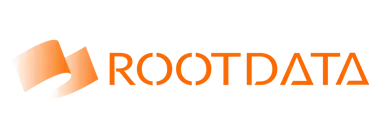Exclusive Interview with Avail: Preparing for the Future DA Infrastructure Competition from the Rollup Perspective
Sep 13, 2024 02:54:44


Original | Odaily Planet Daily
Author | jk
Since the end of last year, DA (Data Availability) has become a hot new star track in the crypto industry, and the data availability layer has become an important component of the modular architecture. The core function of the DA layer is to ensure that on-chain data is available and accessible to all network participants.
DA track projects have emerged like mushrooms after rain, with well-known ones including Celestia, EigenLayer, NearDA, and Avail. Although they share the same goal, there are differences among the major projects in terms of infrastructure stack, execution routes, and incentive models.
Due to the previous significant rise of TIA and the popularity of re-staking projects based on EigenLayer, users in the Chinese community may be more familiar with Celestia and EigenLayer, while Avail, which just announced a $27 million financing, may be the next target worth deeper attention.
Avail's mission is to simplify the Rollup experience and provide a unified and efficient platform for users and developers from various ecosystems. To achieve this goal, Avail has been building a unified infrastructure layer called Avail Trinity, which includes the foundational Data Availability (DA) layer, the Nexus unified layer, and an additional security layer called Fusion.
Odaily Planet Daily conducted an exclusive interview with Avail co-founder Anurag Arjun. Anurag elaborated on the origins and vision of Avail, its roadmap and plans, as well as the key points we should pay attention to and the opportunities we should participate in.
Financing and Background
On February 26, the Web3 infrastructure layer Avail announced the completion of a $27 million seed round financing, led by Founders Fund and Dragonfly, with participation from SevenX Ventures, Figment, Nomad Capital, and several angel investors.
The team started in 2020 at Polygon and spun off from the Polygon ecosystem in early 2023, led by former Polygon co-founder Anurag Arjun and former research head Prabal Banerjee.
Avail stated that it will use the new financing to accelerate the development of its three core products: DA, Nexus, and Fusion. These core components that make up Avail Trinity will lay the foundation for a unified Web3.
The first component of Avail, Avail DA addresses scalability issues by ensuring scalable and secure data availability. The Avail DA layer features validity proofs and Data Availability Sampling (DAS). Unlike other DA solutions that rely on Optimism, Avail's use of validity proofs increases transaction speed by 10 times, providing end users with a faster and more responsive unified experience.
The second component, Avail Nexus, will serve as a validation center, utilizing Avail DA as a trust base to unify both within and outside the Avail ecosystem. Avail Nexus is a zero-knowledge proof-based aggregation on Avail DA, consisting of a proof aggregation/verification layer and a sequence generator selection mechanism, which will operate effectively through the embedding of Avail DAS light clients based on validity proofs and execution proof aggregation. The aggregated evidence will also be sent to Ethereum.
Finally, to ensure the consistency of the Avail technology stack, Avail is building Fusion security—the third part of the Avail Trinity, which introduces native assets from mature ecosystems such as BTC, ETH, and others, providing additional security for the Avail ecosystem. In addition to increasing security, this also allows ETH, BTC, and other new assets to play a role at the base layer, further enhancing their utility.
Based on this architecture, Anurag Arjun specifically explained to Odaily Planet Daily how to achieve the aforementioned vision of a "seamless unified Web3 ecosystem." Below is the transcript of the interview, organized and edited by Odaily Planet Daily~
Q&A
Q1. First of all, we are curious about the origin of Avail. How did it separate from Polygon to become a completely independent project? Could you briefly introduce the history of Avail?
Anurag Arjun: I entered the cryptocurrency field in 2017. Before that, I had been working in fintech and technology product engineering.
In 2017, I co-founded Polygon and built a large number of Polygon technology stacks, including Plasma, PoS bridges, and also developed zero-knowledge proof strategies.
At the end of 2020, when we officially launched Polygon PoS and everything started to stabilize, I began to think about what to do next. I knew that projects like Polygon PoS would eventually turn to zero-knowledge proofs.
So last year, you saw the launch of other projects like Polygon's zkEVM. At the end of 2020, we internally initiated the Avail project.
Q2. What motivated the launch of Avail, and what problems does Avail solve in the industry?
Anurag Arjun: Ethereum was originally on a roadmap for sharding, but in 2020, Ethereum released a Rollup-centric roadmap. This is significant, as it has led to a general consensus that Rollup is the preferred solution for scalability.
Before Rollup was invented, the only way to launch a chain was to build a chain, recruit validators, issue tokens, and ensure that the tokens had value to guarantee sufficient cryptoeconomic security, etc. If you wanted to launch a chain, you had to deal with everything that L1 faces.
With Rollup, project teams no longer need to invent their own security mechanisms, recruit validators, or issue tokens. Because any Rollup built on top of the underlying base layer shares or borrows the security of that base layer. This is a significant innovation, as projects can now focus on business logic rather than economic security. This is also why Rollup has been popular in the past two to three years.
Today, about 40 to 50 L2 Rollups are about to launch, with possibly hundreds more in development. We are entering a Rollup-centric future. We want to create a platform that addresses the challenges that the "Rollup-centric future" will face.
First, the main problem that Avail addresses is how to increase the number of Rollups or how to scale Rollups. Rollups are very eager for data availability and need to ensure transaction ordering.
To support a large number of Rollups, the industry needs scalable data availability components. Avail's first component—Avail DA—is a scalable, state-of-the-art data availability solution built using the same technical primitives that Ethereum will use in its data sharding roadmap, achieving data availability sampling.
Avail has been building this solution for the past three years, and it is nearing completion, expected to launch in the second quarter of this year.
However, we will not stop there.
Imagine that after Avail DA solves the scalability problem of Rollups, hundreds or thousands of Rollups emerge, and the user experience will become very fragmented. Therefore, the second part of Avail, which we are announcing today, is Avail Nexus—a unified framework that aggregates these Rollups, allowing them to connect and communicate with each other. Users do not need to deal with the complexity of these chains; they just need to express their intent, and Avail Nexus will handle all routing, etc. Thus, this is a more foundational infrastructure that allows us to abstract and aggregate all these Rollups.
We are also announcing the final part of Avail—Avail Fusion, the Fusion security layer, which provides a unified framework and unified security. Previously, people relied on native tokens for crypto security. In the future, Fusion can allow other assets (like BTC) to join, thereby accumulating cryptoeconomic security.
In summary, these are the three things I want to announce today. These are also our motivations for building Avail.
Q3. I have another question about the product itself: how does Avail address compatibility issues within existing blockchain ecosystems? What are the differences in integration for EVM and non-EVM?
Anurag Arjun: Avail is a trusted, neutral Rollup-agnostic framework that does not execute any operations itself. Operations will be executed by Rollups running on Avail. Therefore, we are compatible with EVM Rollups; for example, Avail has already integrated with Optimism (OP Stack), Arbitrum, Polygon zkEVM, and ZK Sync, and is also collaborating with non-EVM StarkWare, as well as integrating with Sovereign Labs and Stacker.
You will find that all types of execution environments can run on Avail. We use zero-knowledge proof aggregation principles to connect these Rollups, and the data availability sampling combination is based on validity proofs, allowing different types of Rollups to communicate with each other.
Q4. Avail has been in development for a long time. What challenges have you encountered? How were these challenges overcome?
Anurag Arjun: Avail is trying to meet the growing demand in the market over the past year or two.
Ethereum, as a very valuable chain, protects at least hundreds of billions of dollars in value. While Ethereum is still working hard on its own scalability roadmap, upgrades always take time.
Rollup Stacks are emerging rapidly. In addition to leading Ethereum L2 Rollup Stacks like Polygon, Arbitrum, ZkSync, StarkWare, and Optimism, there are about 5-10 other Rollup Stacks also under construction, and we are actively involved in them.
These Rollup Stacks are like SDKs, and in the future, there will be hundreds or thousands of chains on each Rollup Stack. Rollups hope that developers can accelerate the construction of application chains and that users can enjoy low fees.
Therefore, our challenge is to meet market demand as much as possible when Rollups need to scale and to reduce the cost of data availability.
Additionally, users also need us to solve the "fragmented experience" problem. This is why Avail Nexus is very important. We will address this fundamental need in the next 6-12 months.
Q5. Next, let's talk about competition. Although I don't intend to name names, there are indeed some very well-known competitors in the field of data availability (DA). Perhaps we are still in the early stages of DA development. How does Avail view its relationship with competitors in terms of cooperation or competition? Does the existence of competitors prompt Avail to adjust its strategy or goals?
Anurag Arjun: Returning to the motivation for building Avail, it addresses the ancillary issues brought about by the core functionality of Rollup upgrades, but as I mentioned, DA is just one component of this.
Many competitors focus solely on the DA component. Of course, many very talented teams are doing well in this regard. Each team is following its own implementation approach.
We have adopted a more guarantee-proof-based implementation approach and data availability sampling. Others have taken a more fraud-proof-based approach.
I believe that, essentially, scalable DA has already been solved, the DA part will become very generalized and commoditized, and it is a lower-value area. The reason we build our DA using guarantee proofs and data availability sampling is that this allows us to enable Avail Nexus at the top level. Without Avail's specific implementation, Avail Nexus would not be possible.
Pure DA solutions will become very commoditized. Therefore, while we will certainly have comparative solutions, that is not where we see the value. We are positioned to help Rollups scale, create communication and connections between them, and increase security.
Having competition is a good thing; it motivates us to do more and work harder. I value the work of all competitors and look forward to expanding blockchain together.
Q6. So, in the early stages, how does Avail plan to differentiate itself from competitors?
Anurag Arjun: Essentially, our value proposition is that there will be many Rollups, and we will certainly launch alongside other solutions.
The core question is, why are we building the "Trinity"? It is to make this technology accessible to mainstream users. If we present all the complexity of Rollups and chains to mainstream users, it won't work. Many talented teams are building Rollup Stacks. Each of them will occupy a position and iterate on their products, while we unify and interconnect them to provide users with a seamless experience. This will be the main focus.
Q7. What are Avail's future development plans? Are there any important milestones or potential airdrops worth looking forward to?
Anurag Arjun: In terms of the timeline, Avail's DA release is expected in the first half of the year, and it is very close. The first version of Avail Nexus is expected to launch by the end of this year, and Avail Fusion Security is expected to launch next year. This is the timeline for product development.
Currently, I do not want to comment on any specific airdrops, but there will certainly be many community activities. Avail is a community project, fundamentally building the entire Avail ecosystem. Therefore, we intend to develop this project together with our partners and the community.
Q8. As a final question, do you have anything to say to developers and partners in the Chinese market who want to join the Avail ecosystem?
Anurag Arjun: Blockchain practitioners have been continuously innovating. We have been exploring ways to build the next generation of blockchains, and Rollup is an underrated innovation. When it was invented in 2019 and 2020, not many people knew about it, but now people are slowly starting to see many teams launching their own Rollups.
I believe that Rollups do not necessarily have to be EVM Rollups; they can exist in any type of execution environment. We are particularly optimistic about application-specific Rollups. This means that when developers build applications, they will no longer just write smart contracts and build applications on top of them, but will replace them with very lightweight chains.
To draw an analogy, it's like accessing applications on the internet today. For example, when you shop on Amazon or any other e-commerce site, when you want to pay the merchant, users think they are communicating with Amazon, but Amazon's architecture is designed to communicate with many participants in the backend. When you want to purchase something, Amazon sends a request to Visa's microservice or Stripe's microservice. When you send payment details, that information is verified, and then Visa replies whether the payment was successfully completed.
So what I want to say is that Web2 applications are very "efficient"—even though there is a lot of complexity behind the scenes, users do not truly feel that complexity. Applications on the internet use asynchronous network services.
I believe that the next evolution of blockchain applications will be very similar to internet applications. There will be a series of complex operations happening in the backend, but users will not be directly involved in them.
Web3 will be a whole, with many applications running in parallel and communicating asynchronously. The blockchain technology we are introducing will serve the next generation of Web3. Avail will play a leading role in this.
The Chinese community has always been very active in development, with many innovations in the fintech field. Therefore, I believe that participating in the field of Rollup technology is a beneficial thing. Of course, this includes the construction of Avail technology. In the future, blockchain applications will be realized through Rollups and unified infrastructure.

Related Projects
Latest News
Oct 22, 2025 14:22:50
Oct 22, 2025 14:18:52
Oct 22, 2025 14:15:03
Oct 22, 2025 14:09:01
Oct 22, 2025 14:01:01













